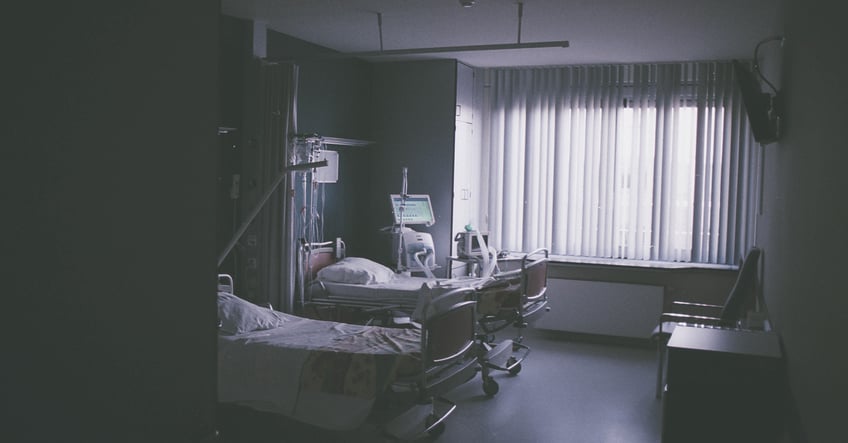
Worldwide, cases of hospital acquired Legionnaires’ disease have been on the rise, with research showing that the potentially fatal bug is present in 12-85% of all hospital water systems1. A study carried out by CDC found that 19% of cases are associated with long-term care facilities and 15% with hospitals. The majority of cases have been linked to Legionella pneumophila serogroup 12.
Why are Hospitals and Care Homes High Risk?
Legionnaires’ disease is life-threatening unless treated quickly. This is especially true in healthcare and care facilities where mortality rates are as high as 40% due to the vulnerability of residents3. Individuals that have weakened immune systems, who have undergone recent surgery and who are using respiratory equipment are at a much higher risk of being infected with the disease4. Smokers, the elderly and new-born babies are also more susceptible to infection. Because of this, such facilities should be highly aware of the risks and should aim to reduce risk factors to 0.
Some common areas for concern are showers, humidifiers, respiratory devices and even birthing pools, which were implicated in the infection of a new born babies in Arizona in 20165. Complicated or old pipework with dead legs or water systems where water is kept below 50 degrees Celsius also pose a threat, as they provide ideal conditions for rapid Legionella growth and spread. This is a serious problem for both ageing facilities and newly renovated ones where schematics of old and new pipework may not be up to date or complete.
How to Test for Legionella in Hospitals and Care Homes?
Regular monitoring, testing and disinfection of water systems in a healthcare environment is crucial. However, water safety plans are often designed to meet bottom line regulations rather than to minimise Legionella risks to 0, and in some cases may not be comprehensive enough to completely avoid growth and spread of Legionella bacteria – for example, the Lab Culture method which is outlined in most regulations and guidelines all over the world cannot detect VBNC Legionella and cannot easily detect Legionella in its most dangerous phase, the motile phase, because these stages are not culturable in a lab environment6.
This method also has a very slow time to result - a huge problem when the risk of acquiring Legionnaires’ disease can increase by 64% for every hour spent near the source of an outbreak8 (this number is likely to be higher for patients who are immunosuppressed). Thus, it is crucial that duty managers in the healthcare and nursing home sector can implement remedial action quickly.
Today, faster solutions like Hydrosense can provide duty holders with quick and accurate results for the most dangerous strain of Legionella – L. pneumophila SG1 – which is responsible for almost all cases of Legionnaires’ disease. Results can be obtained onsite in minutes, by anyone with little to no training. This simple test can protect against many of the limitations of the Lab Culture method, helping to protect vulnerable persons and avoid other negative consequences of an outbreak such as huge fines and bad press.
More like this:
Legionnaires' Disease is Hospitals is Widespread, Deadly and Preventable
Legionella Risk in Pools and Spas
-
Stout, J. and Yu, V. (2003). Available at: http://bit.ly/33oymBE [Accessed 3 Oct. 2018].
-
Health.gov.au. (2015). [Online] Available at: http://bit.ly/2qQlUNI [Accessed 11 Oct. 2018].
-
World Health Organization. (2018). [Online] Available at: http://bit.ly/2QXVCDM [Accessed 3 Oct. 2018].
-
Hse.gov.uk. (2019). [Online] Available at: http://bit.ly/2mp61LE [Accessed 25 Jan. 2019].
-
Granseth, G., Bhattarai, R., Sylvester, T., Prasai, S. and Livar, E. (2017). [Online] Centres of Disease Control and Prevention. Available at: http://bit.ly/2DoEcbE [Accessed 25 Feb. 2019].
-
Ramamurthy, T., Ghosh, A., Pazhani, G. and Shinoda, S. (2014). Available at: https://www.ncbi.nlm.nih.gov/pmc/articles/PMC4116801/ [Accessed 11 Mar. 2019].
-
Garduño, R. (2007). [Online] pp.65-84. Available at: http://bit.ly/2kHDG2L [Accessed 11 Mar. 2019].
-
D.B. Jernigan MD, J. Hofmann MD, M.S. Cetron MD, J.P. Nuorti MD, B.S. Fields PhD, R.F. Benson MS, R.F. Breiman MD, H.B. Lipman PhD, R.J. Carter PhD, C.A. Genese MBA, S.M. Paul MD, P.H. Edelstein MD, I.C. Guerrero MD. (1996). [Online] Available at: http://bit.ly/2OouGva [Accessed 11 Mar. 2019].
-
Muder, R. and Yu, V. (2002). [Online] 35(8), pp.990-998. Available at: http://bit.ly/2kGwUKE [Accessed 6 May 2018].
